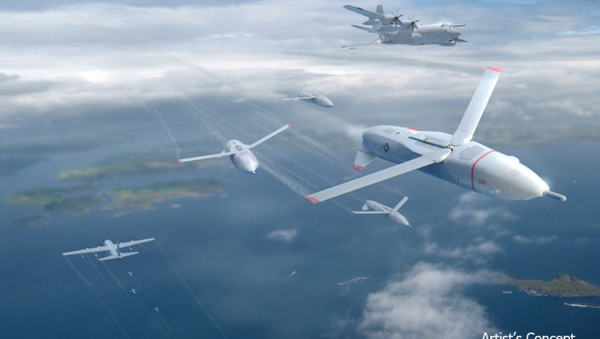Russia's Izvestia newspaper reports that the system, first shown off at the Army-2016 expo in September, is now being considered for introduction into the Russian military.
Repellent-1 was created by engineers from the Moscow-based JSC Scientific & Technical Center of Electronic Warfare (STC-EW) design bureau. The system is capable of automatically detecting and neutralizing enemy spy drones at distances of over 30 km, suppressing their control sensors via powerful jamming, or through directed interference to the drones' satellite navigation systems.
Built onto a three-axle MAZ-6317 truck, the 20 ton Repellent-1 system is mobile, allowing it to defend advancing military units on the battlefield, as well as stationary objects such as military bases and airfields.
The system is operated from a workstation in the control cabin on the back of the truck, situated next to a collapsible telescopic mast, data from which is fed into the control cabin. The upper section of the mast contains the heart of the complex – electronic intelligence and jamming equipment, together with a panoramic camera. On two monitors, personnel can observe the local radiofrequency environment, as well as any counter-jamming systems which are aimed against it.
Photos of the system, together with its assumed technical capabilities, can be found here and here.
Speaking to Izvestia, STC-EW general director Aleksandr Sarkisyan confirmed that "at the moment, work on the complex has been completed."
"The system has passed the full cycle of necessary testing, including under the auspices of the Ministry of Defense, and fully conforms to the design characteristics inherent in the development phase," he added.
According to Sarkisyan, the system is now being considered for introduction into the Russian Armed Forces.
Furthermore, development work is also planned for a portable version of the anti-miniature drone system. "We plan to create a portable, collapsible version of the complex, adopted to be carried by several persons" in disassembled form, which would make it "suitable for rapid deployment in crowded areas," Sarkisyan explained.
Therefore, the expert noted, "fighting against a whole swarm of drones is possible only by drowning out their control channels and satellite navigation with powerful radio interference. But a drone's control signal is very weak, which means that modern electronic intelligence systems like Avtobaza-M and Moskva are not able to detect or localize them." Hence the development of systems like Repellent-1.
According to the newspaper, among its foreign competitors, only the Blighter Surveillance Systems' Blighter anti-UAV defense system offers anything close to the Repellent-1's capabilities. However, that system operates effectively at distances of only 2.5 km.




